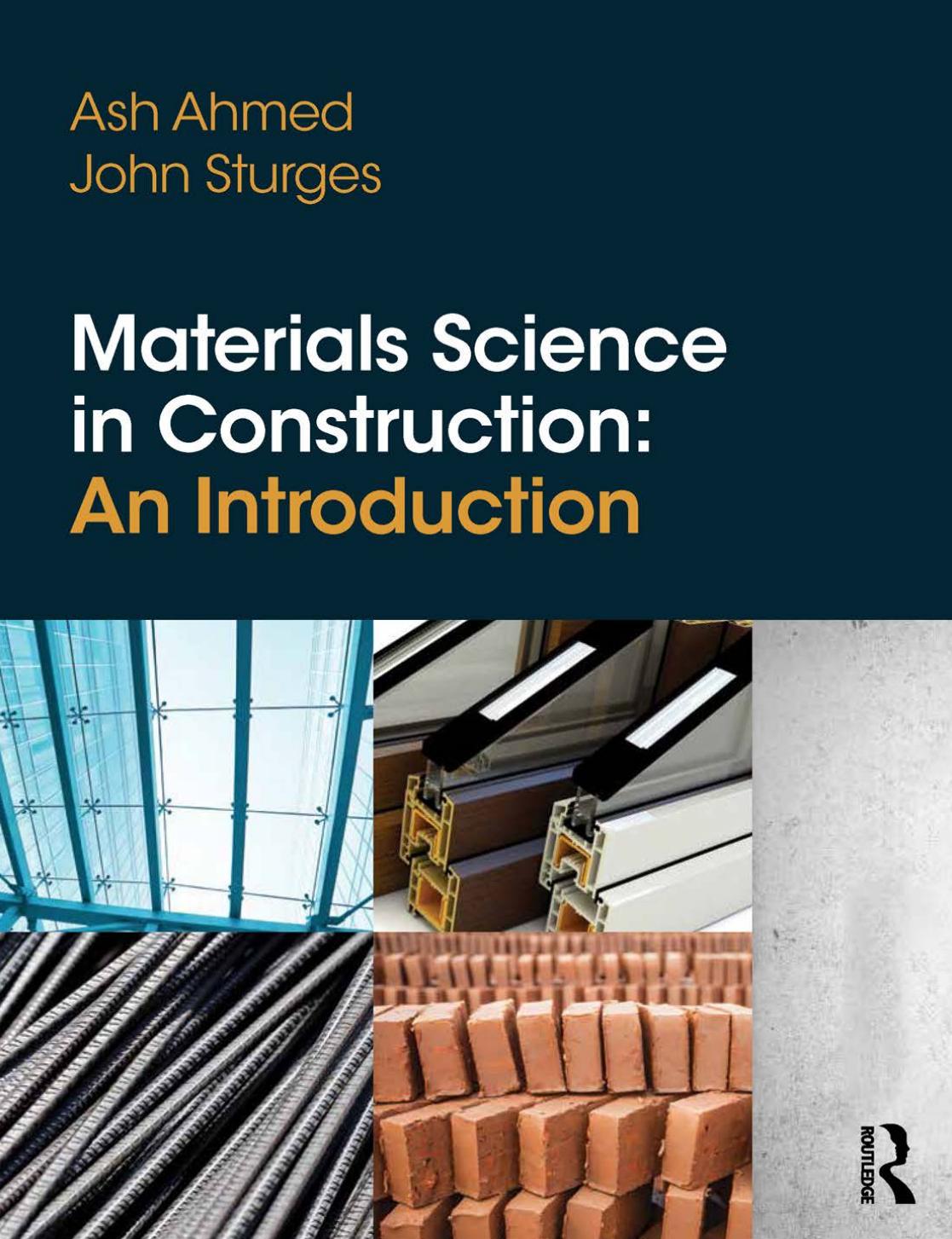Materials Science In Construction: An Introduction by Ahmed Arshad Sturges John

Author:Ahmed, Arshad, Sturges, John
Language: eng
Format: epub, pdf
ISBN: 9781135138400
Publisher: Taylor and Francis
13.3 Production of aircrete
Cement or cement and lime with pulverised fuel ash (PFA) and/or ground sand form the calcareous and siliceous ingredients, which are mixed together with water to form a low-viscosity slurry. The mix receives a predetermined small dose of finely divided aluminium powder just before it is poured into pre-oiled large steel moulds. The mould is of a size and dimensions suitable for the volume required to make a specific number of blocks or slabs. Approximately one-third of the mould is filled with the slurry. Therefore, the mould is kept in a warm and humid environment and the slurry is left to hydrate. The period of time depends on the process used. The aluminium powder soon reacts with the alkaline environment in the mix to generate tiny bubbles, which stabilise to form the aircrete cellular structure. During this process the mix rises in a similar way to cake in an oven, hence giving the material the porous structure. After the initial set has taken place it is cut into block size. The final process involves autoclaving for approximately 9–12 hours at 180–200 °C, which provides the product with its final strength. It is ready for despatch usually after cooling. In the UK most aircrete is manufactured using PFA, which confers environmental benefits as PFA is a waste product from coal power stations.
Aircrete consists of 60–85 per cent air by volume, depending on density. The solid material part is a crystalline binder, which is called tobermorite. Besides the binding phase, tobermorite, grains of quartz and small quantities of other minerals also exist. The chemical composition of tobermorite comprises of silicium dioxide, calcium oxide and H2O (water). It is tobermorite that provides the relatively high compressive strength and stability of aircrete in spite of the high proportion of pores and lack of course aggregate in this material.
During manufacturing, gas-forming tiny aluminium flakes within the powder produce millions of small bubbles of hydrogen in the slurry. The mixture rises in its moulds until all aluminium has reacted and the desired volume is reached. Bubbles formed are mostly about 1 mm in diameter, which gives the porous structure. The production process is modified accordingly to attain the appropriate level of porosity. The production process is simplified and illustrated in Figure 13.1.
Download
Materials Science In Construction: An Introduction by Ahmed Arshad Sturges John.pdf
This site does not store any files on its server. We only index and link to content provided by other sites. Please contact the content providers to delete copyright contents if any and email us, we'll remove relevant links or contents immediately.
| American National Standards Institute (ANSI) Publications | Architecture |
| History | Measurements |
| Patents & Inventions | Research |
Whiskies Galore by Ian Buxton(41491)
Introduction to Aircraft Design (Cambridge Aerospace Series) by John P. Fielding(32858)
Small Unmanned Fixed-wing Aircraft Design by Andrew J. Keane Andras Sobester James P. Scanlan & András Sóbester & James P. Scanlan(32535)
Craft Beer for the Homebrewer by Michael Agnew(17903)
Turbulence by E. J. Noyes(7661)
The Complete Stick Figure Physics Tutorials by Allen Sarah(7098)
Kaplan MCAT General Chemistry Review by Kaplan(6549)
The Thirst by Nesbo Jo(6408)
Bad Blood by John Carreyrou(6246)
Modelling of Convective Heat and Mass Transfer in Rotating Flows by Igor V. Shevchuk(6208)
Learning SQL by Alan Beaulieu(5996)
Weapons of Math Destruction by Cathy O'Neil(5780)
Man-made Catastrophes and Risk Information Concealment by Dmitry Chernov & Didier Sornette(5594)
Digital Minimalism by Cal Newport;(5327)
Life 3.0: Being Human in the Age of Artificial Intelligence by Tegmark Max(5150)
iGen by Jean M. Twenge(5128)
Secrets of Antigravity Propulsion: Tesla, UFOs, and Classified Aerospace Technology by Ph.D. Paul A. Laviolette(4864)
Design of Trajectory Optimization Approach for Space Maneuver Vehicle Skip Entry Problems by Runqi Chai & Al Savvaris & Antonios Tsourdos & Senchun Chai(4808)
Electronic Devices & Circuits by Jacob Millman & Christos C. Halkias(4705)
